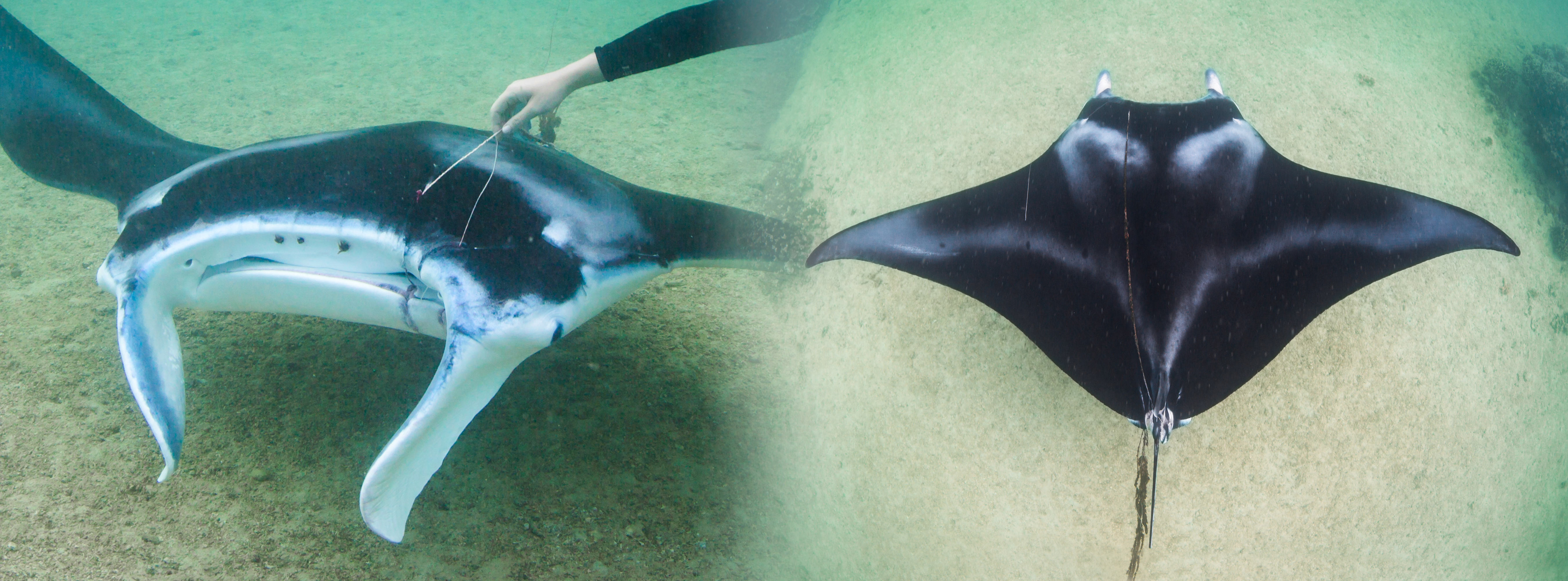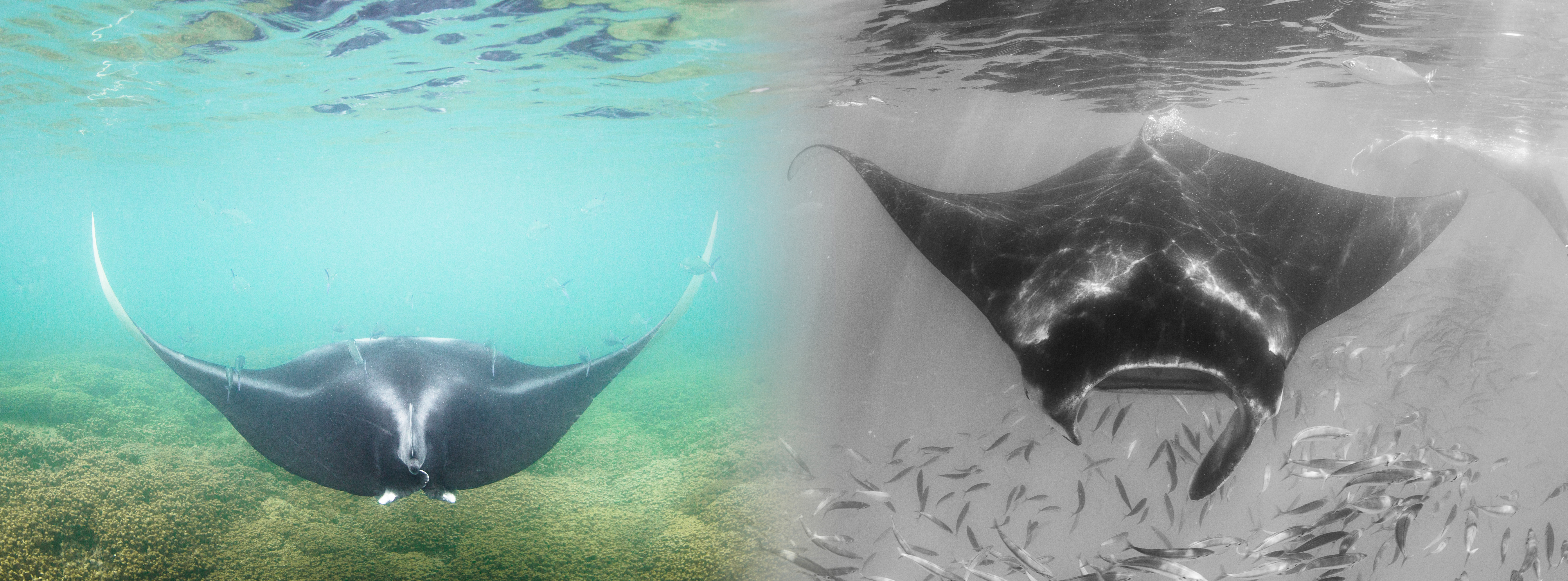We learned that the population of mantas on Oahu is small, so it is particularly important to understand threats to the population and how we can mitigate these threats. We have also learned when and where mantas congregate, providing a basis for how some threats may be avoided. Though mantas are not exploited for tourism in Kāne'ohe Bay, mantas contribute millions of dollars through tourism elsewhere. Mantas are a popular attraction off the coast of Kona on the island of Hawaii, and in tropical scuba diving locations in general. There is potential for such benefits in Kāne'ohe Bay if the population can be kept healthy.
Two primary threats to mantas in Kāne'ohe Bay are entanglement in fishing gear and boat collisions, and evidence of both has been observed. Below are photos of one manta that was found with string wrapped along its body and cutting several inches into its mouth and tail. The string limited its ability to open its mouth and feed, but luckily the manta was cut free before it was too late.

While sometimes less obvious, there are also mantas with injuries that were likely caused by boat collisions or smaller entanglements. Below are two mantas, one missing its tail and the other missing its right mouth appendage. Unfortunately mantas are susceptible to injuries like these when feeding near the surface, particularly if boats are traveling quickly and unable to spot their black bodies against the dark water.

Even though this study is only the starting point to understanding the manta population in Kāne'ohe Bay, it still identifies some possible ways to protect the population. Obviously people should clean up their fishing supplies and watch out for wildlife when boating. Furthermore, given the clustering of mantas along the sandbar ledge, most collisions could be avoided if boaters use the main vessel channel instead of attempting to skirt the sandbar and patch reefs outside the channel. If boaters decide to travel along the sandbar, they should be particularly vigilant on the rising tide. Given the small numbers and potentially fragile status of this manta population, these small behavioral changes can make a huge difference!


